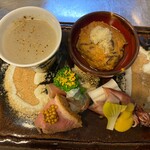
神山
Kamiyama ◆ カミヤマ【旧店名】清山
3.49
Shibuya
「Soba」
8,000-9,999円
1,000-1,999円
Opening hours: Lunch [Mon-Fri] 12:00-14:00Dinner [Mon-Fri] 17:30-21:00(lo)Reservations must be made by the day before and are for courses only.5500yen, 7700yen, and 11000yen coursesSaturday only (reservations not accepted)12:00-20:00Close when soba is gone
Rest time: Sundays & Holidays
東京都渋谷区神山町10-8
Photos
(20)
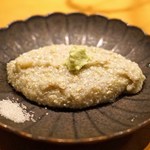
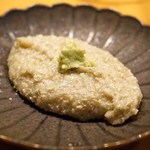
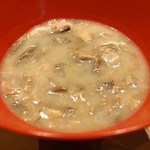
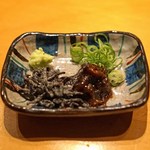
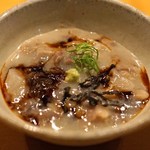
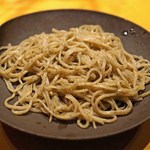
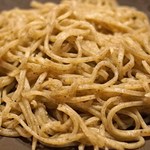
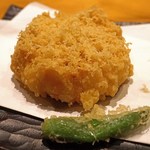
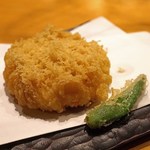
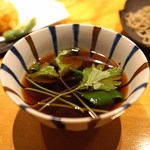
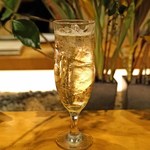
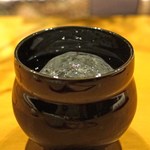

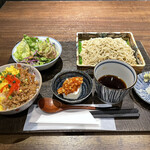
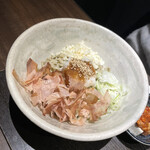
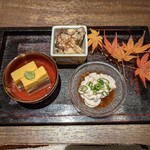
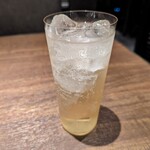
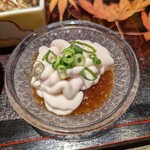
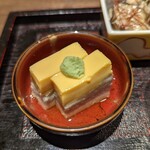
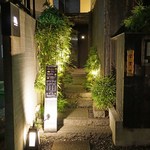
Details
Reservation Info
(on) a subscription basis
Payment Method
Credit cards accepted
(VISA, Master, JCB, AMEX, Diners)
Electronic money accepted (e.g., Suica, transportation-related electronic money)
QR code payment accepted
(QR code payment available (PayPay)
Restaurant Service Fee
10% service charge
This fee is charged by the restaurant, not related to our platform
Number of Seats
20 seats
(14 tables, 6 private rooms)
Private Dining Rooms
Yes
(6 available)
Smoking and Non-Smoking
No smoking at the table
Parking
None
Facilities
Stylish space, calm space, counter seating, tatami room, free Wi-Fi
Drink
Sake available, shochu available, wine available, focus on sake
Comments
(21)
蓼喰人
4.00
I have visited this place several times since it was called "Seizan" and have always had a good impression of the soba and sake enjoyed in the underground space. After the management changed and it became "Shinzan," I visited once, but later due to the influence of the coronavirus, they switched to a fully reservation-only course menu in the evenings. It seemed that they were open for lunch as well, but since it is more suitable to relax with a drink, it was difficult for me to visit. Upon researching, I found out that on Saturdays, they have continuous business hours from afternoon to evening and reservations are not required. Coincidentally, there was a matinee concert at the nearby NHK Hall on a Saturday, so I decided to visit after confirming that they were open a few days prior. I arrived around 3:30 pm, and it was my first time entering in the daylight. A young male staff member who answered the phone remembered my voice when I entered through the large sliding door. After waiting a bit for the table setting, I was led to a seat in the back of the first-floor area this time. It was my first time on the first floor, and the space was not very large, with a tranquil atmosphere created by the abundant indirect lighting, and each table was separated for a calm atmosphere. Modern jazz was still quietly playing in the background. I started with a "Kaku Highball" instead of beer. For the appetizer, I received a "Three kinds of appetizers" on a long rectangular plate with "Shirako Ponzu Jelly," "Sea urchin tofu and taro arrangement," and "Oil-pickled oysters" arranged in small dishes, accompanied by a branch of autumn leaves. All of them were of high-quality traditional Japanese cuisine, and it was enjoyable to savor them carefully. I then moved on to sake and started with a 1-go of "Gakki Masamune" from Fukushima. It was served in a thin glass beaker-shaped glass container, with a stylish glass accompanying it. It had a fruity taste with a solid flavor lingering afterwards, providing quite a satisfying feeling. I added two more dishes. The "Spicy Chicken" was lightly blanched and thinly sliced chicken breast mixed with grated daikon radish seasoned with soy sauce, and served with grated radish. It had a good balance of flavors with sesame seeds and yuzu zest, making it delicious. The other dish that caught my eye was the "Grilled dish of the day," which turned out to be "Grilled miso-marinated yellowtail." The yellowtail fillet was skewered and grilled until golden, then miso was spread on the surface and seared to finish in a teriyaki-style. The miso seemed to be slightly sweetened with Nishikyo miso, and it paired well with the juicy yellowtail. The grilled Manjyuji chili pepper on the side was also well done. I also wanted to try the "Coarsely ground sobagaki," so I ordered it. Many bamboo grove-style restaurants serve two types of sobagaki, and this place also had a finer, smoother type, but I chose this one. It was molded in the shape of a leaf, with high-quality fresh wasabi grated on top in the center. It had a fragrant aroma, a pleasant grainy texture, and it was enjoyable to wrap it in nori with wasabi and salt, and then dip it in soy sauce provided on the side. It was also delicious when paired with the remaining "Spicy Chicken." I received two types of sake, with "Niwano Uguisu" from Fukuoka. It had a slightly acidic depth of flavor that paired well with all the dishes. For the soba, I ordered the basic "Seiro" style. Here, they start with low-temperature-stored whole buckwheat grains, grind only the portion to be used that day in a stone mill, and they also pay attention to the water used for kneading, following the traditional methods of the bamboo grove. The soba that arrived was neatly aligned, with a fine texture and even small stars visible. When I brought my nose close, it had a fragrant smell, and the cooking was precise, resulting in a crispy texture, smooth mouthfeel, and a refreshing throat sensation, showing excellent workmanship. The dipping sauce seemed to have changed itself or was differentiated in taste as "Inaka," but it tasted sweeter than before. However, it was not bad at all, and the balance between the dipping sauce and the broth was well-maintained.




ffkfx
4.10
I went to lunch with my colleagues. It's so hot every day, so I wanted to eat something refreshing. I was torn between ordering just the sudachi soba or the set meal, but after asking the staff, I decided on the set meal which included ankake fried rice. By the way, the price for both the single item and the set meal was the same, but the single item has a larger portion of noodles. The sudachi added a refreshing acidity and a cool fragrance, making it really delicious. The ankake fried rice was surprisingly delicious for a soba restaurant. Thank you for the meal.
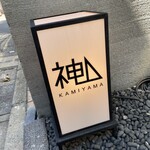
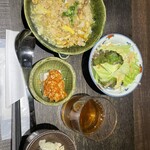
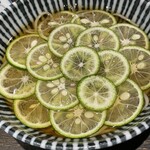
N.Kaito
3.80
I had the limited quantity vinegar citrus soba set meal. It was refreshing and delicious, perfect for summer! The fried rice that came with the set meal was authentic and exceeded the quality of a regular soba restaurant. The interior of the restaurant was clean and had a relaxing atmosphere. It was a wonderful place that made me feel like I definitely want to come back again.
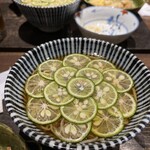
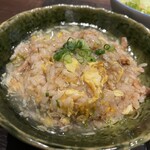
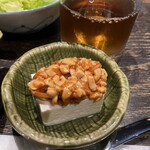
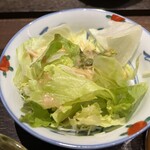
e4d5f8
4.00
It's been about 10 years since I last visited Kamiyama. The soba here is still delicious. The aroma of the soba is very noticeable. I also like the elegant taste of the clear broth. The lunch set's ankake fried rice is also delicious! It's so good that I think they could offer it as a standalone menu item. But my favorite is the soba soup here. It's so thick and rich that you might think it's made with soba. I highly recommend it to fellow soba soup lovers.
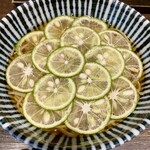
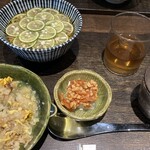
mura1969
3.70
I enjoyed a course meal full of soba dishes that started with light and fluffy soba noodles. From the beginning to the end, it was all about soba. The dishes were perfect for summer, with a cool and refreshing touch. I couldn't help but smile even while enjoying the soba dessert at the end. Thank you for the wonderful meal!
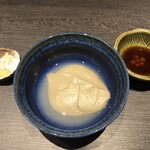
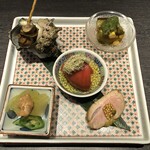
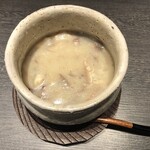
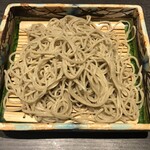
田吉
3.50
I had some sudachi soba. It came with a salad which made me happy. The sudachi soba was refreshing and delicious, perfect for a hot day. The broth was also very tasty. It was nice to have extra broth to enjoy with the soba water, a great service for soba water lovers. I recommend this place for a relaxing meal.
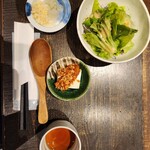

にゃんたらかんたら
3.00
I stretched my legs during the company's lunchtime and enjoyed delicious vinegar citrus soba. It was a very stylish soba restaurant with indirect lighting and jazz playing in the background. I had a refreshing and delicious vinegar citrus soba on a hot day. The noodles were thin and the acidity of the vinegar citrus was good, I felt like I could eat another bowl (laughs). I would love to visit again at night next time.
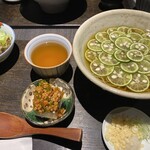
ice_m545
3.20
I went at 12:00 on a regular day and was able to get in without waiting in line. However, within 10 minutes, the restaurant was full and it became clear that it was quite popular. I chose the lunch set for 1,100 yen. Overall, it was elegant and nice, but the portion was decent for the price and the taste was also decent for the price. However, the soba broth was exceptionally delicious!
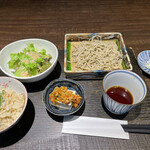
Papa03130111
3.40
I walked through a narrow passage and opened a large sliding door to enter the restaurant, which had a solemn atmosphere with a black color like ink. I ordered the "Kamiyama Soba Lunch Set" for 1,100 yen, which came with soba noodles, tororo rice, salad, and a side dish. The soba noodles were thin and elegant, quite delicious. The rest was as expected. The soba broth was thick and seemed authentic. It's a quiet and cozy hidden gem of a restaurant. Thank you for the meal.
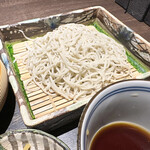
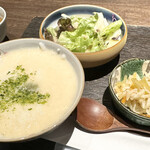
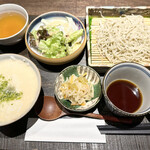
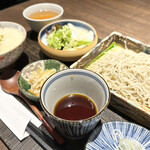
くるん。
5.00
I wanted to eat soba, so I went with a friend. When I made a dinner reservation on Tabelog, I could only choose between a 5,500 yen or 11,000 yen course, but it seems there was also a 7,700 yen course available...! It was a bit of a treat price, but considering the atmosphere and the quality of the food, I thought it was a reasonable price. Every dish in the course was truly delicious... The soba kimi I tried for the first time had a texture like soba-flavored tofu, so soft and bouncy! The appetizers, such as hime sazae, butterbur sprout croquette, duck, and sweetened fava beans, were all satisfying dishes. The dashimaki tamago (rolled omelette) was delicious in a way that made me wonder how it was made! I also tried beef tendon soba soup for the first time, and enjoyed various ways of eating it - first as it is, then with condiments, and finally with tamari soy sauce... The soba had a good texture, and just one bite made me think, "Ah, this is good soba!" Lastly, I had soba tea and soba flour chiffon cake. This cake was also exquisite! This is the kind of restaurant that can be used for a treat, a date, or some special occasion. I visited on a weekday night and it was not crowded, so my friend and I could relax and enjoy. I will definitely visit again! Thank you for the meal.
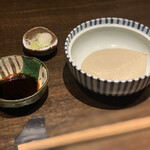
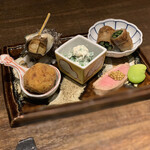
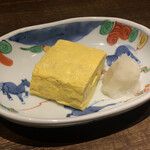
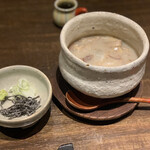
moeko0509
3.50
I always knew this place existed, but it's tucked away in a really hidden corner of a back alley, making it hard for those who don't know about it to step inside. Thanks to that, I was able to enjoy my soba quietly and peacefully without having to wait in line. The lunch set of tororo soba costs 1,500 yen, which is a reasonable price considering it comes with a salad (with crispy fried soba as an accent) and tofu. The tororo soba itself is very delicious, with a hidden egg yolk inside that adds an extra layer of enjoyment when you break it. The set also comes with regular noodle dipping sauce for the soba water, so I was able to enjoy it three times. As a light eater, I was full, but for men, the lunch set with rice might be a better option. Thank you for the meal!
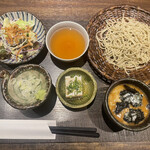
john.amano
3.60
The portion size is elegant, so even a large portion can be easily finished. What surprised me was the thickness of the duck meat in the duck soba. There were four thick slices of meat hiding in the soup, making it a bit of a challenge to chew through. The soup paired well with the green onions and trefoil, and the soba noodles were aromatic. The lunch set also comes with salad and simmered tofu. While the amount of soba noodles is on the smaller side, overall the price is justified by the quality of the meal. The thick soba broth was also very good.
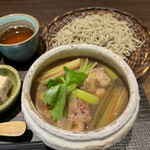
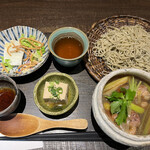
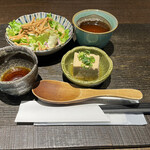
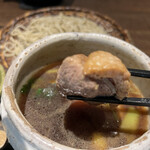
blacknightpooh
3.50
Today, we visited "Kanzan" in Jinbocho (Okushibu) for lunch. It's a popular spot, so we went around 1:30 pm to avoid the crowds, and we were able to get in easily. I ordered the small bowl lunch set (with chicken soboro and egg) and a side of soba noodles, while my wife ordered the grated radish soba. The soba noodles were delicious, although I'm not sure about the exact ingredients. The small bowl was also very tasty. A friend recommended this place to us, saying that the countryside soba and soba flour are really good, but it seems like they only serve them during the evening course or on Saturdays for their a la carte menu. I'd like to visit again on a Saturday next time.


marine04
4.00
Time difference post, located in the southern-west part of the NHK Broadcasting Center in the Okushibu area, is the Soba Kamiyama restaurant. Reservations are required for evening visits, and only omakase (chef's choice) is available. I visited this restaurant based on a friend's recommendation and was truly impressed by the delicious soba noodles. The assorted appetizers were beautifully presented, and the ayu (sweetfish) confit wrapped in tade leaf sauce and the unique spring rolls were exceptional. For the main dish, I ordered the steamed soba and sudachi (a type of citrus fruit) soba, both of which were delicious with thin noodles that were easy to eat. This hidden gem of a restaurant has a cozy atmosphere that is suitable for dates, family outings, or business entertaining. They also offer lunch, making it a recommended spot when in the area. #soba.kamiyama
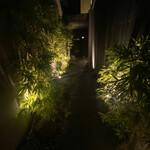
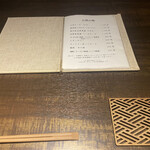
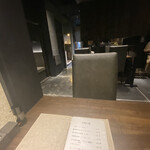
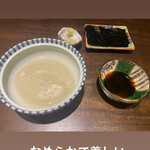
puku_puku_diary
3.30
"Kanzan 'Shibuya' - I visited this place about 3 years ago but it was closed. They have since moved offices and are now nearby, so I decided to give it another try! I tried their sudachi soba which I had been curious about for a while. It looked refreshing and tasted light, perfect for the hot summer. Even though I arrived slightly after lunchtime, the place was almost full, showing its popularity. The calm atmosphere, which you wouldn't expect in Shibuya, was a nice break during my workday."
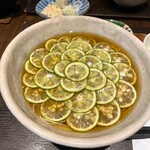
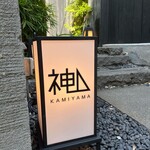
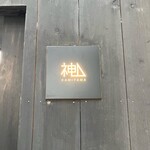
けろたん55
4.00
When it's hot, I feel like having cold soba, so I decided to visit Kamiyama after a long time. I saw a sign outside that said a single serving of soba costs 1,000 yen, and adding rice costs an additional 200 yen. I was worried it might go over 1,000 yen, but during lunchtime until 3 pm, you can get soba with rice for just 1,000 yen. I entered the restaurant and was seated at a table for two. To my surprise, they had limited quantities of sudachi soba! They offered a single serving of sudachi soba for 1,400 yen, and a sudachi soba lunch set for 1,400 yen, which includes rice. I asked the staff about the lunch set, and without hesitation, I ordered it!
The sudachi soba lunch set for 1,400 yen included cold barley tea, followed by salad, tororo rice (daily special rice), pickles, and soba dipping sauce. The staff mentioned that soba broth would be served at the end. The tororo rice had marinated tuna on top, which was delightful! The salad was dressed with sesame dressing. The tororo rice was delicious, with a subtle flavor and fluffy, soft tororo. The marinated tuna was also tasty, and the chopped seaweed added a nice touch.
The sudachi soba arrived with beautiful slices of sudachi floating on top. The soba had a good texture and was thinly sliced, making it easy to eat. The sudachi soup was refreshing, with a light acidity and a cool, refreshing taste that could even be enjoyed without an appetite. The daikon pickle was also refreshing and delicious. Lastly, the soba broth served in a traditional bottle was rich and creamy, providing a comforting end to the meal.
The service was attentive, and they accepted payment through PayPay. I will definitely come back again. I'm also curious about their natto soba here!
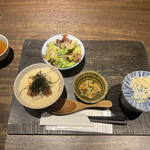
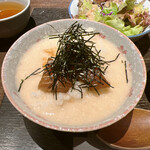
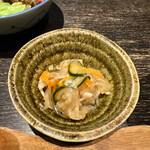
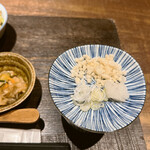
punima
4.00
In July 2022, around 12 o'clock on a weekday, two of us decided to arrive at the restaurant around the opening time. We walked from Shibuya, which was quite a distance, but it was fun because it had been a while since we walked in Shibuya. It was hot though. Since we didn't know the area well, it was a bit confusing. We thought, "If we turn here, it should be there... Huh? Not here...? Ah! There it is, phew." A little past 12 o'clock, there was already one customer ahead of us. As soon as we entered, the place quickly became full. A salad and tofu came with the meal. Is it a lunch set? The Sudachi soba set came with rice for the same price as the Sudachi soba. The tofu with natto and kimchi was quite good. My friend who doesn't like hikinari natto left it, so tastes may vary... But I enjoyed it. The soba seemed a bit small, and I wanted more, but there was a lot of tororo (grated yam) on it! In other places, the tororo soba can sometimes be lacking, but here, it was generously served, and I was happy! Even though the tororo was melted, it wasn't thin. Maybe the ratio of tororo to broth was good. I tried a bit of my friend's Sudachi soba, and it was delicious too! It's refreshing and perfect for summer. It makes you want to drink. The group of women at the next table said, "The duck soba is so amazingly delicious that I've never had anything like it...!!" So, I want to try the duck soba next time. Thank you for the meal!
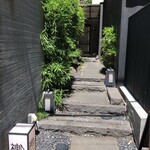
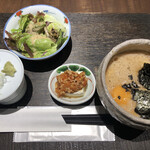
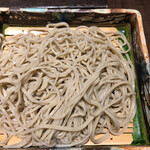
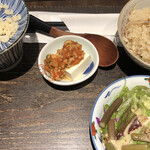
SOBANPO
4.50
The Soba noodles at Kamiyama are delicious! The restaurant recently reopened after renovations and the atmosphere has greatly improved. The decor is chic and elegant, with high-quality vibes. They have private rooms and a terrace. The Soba noodles are carefully made, with perfect thickness and texture. The dipping sauce is rich in flavor, with a strong soy sauce taste from plenty of bonito flakes. The way the green onions and wasabi are prepared adds a wonderful touch. The highlight is the Soba broth, which is thick and flavorful. Overall, a delightful dining experience.
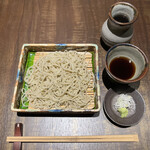
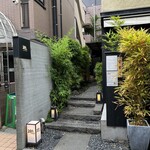
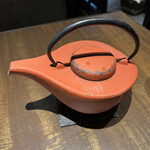
みかぽー
4.50
There seems to be a trend called "Oshibu," and this place is located straight ahead until you reach Center Street, then turn right and go left into a mostly residential area. I wanted to go there, so I was lucky to find a seat available around 13:00 on a Saturday. In the countryside, the food is delicious, but a bit pricey. I think it was ¥1380. The soup was delicious, which made the noodles tasty as well. The soup was so good that I wanted to drink it all. The tamagoyaki (Japanese rolled omelette) didn't seem freshly made, it had a pre-made feel to it.
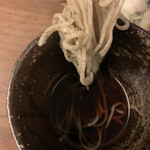
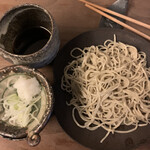
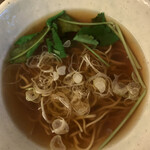
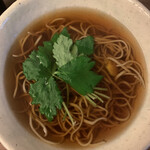
kimi@フードアナリスト
4.00
A place where you can enjoy high-quality soba noodles and sake in a serene atmosphere, away from the hustle and bustle of Shibuya. Perfect for a date or a special outing with loved ones. Lunch is available for around 1,000 yen. Recommended for those who are dining alone or in small groups, those who enjoy soba or Japanese cuisine, and those who appreciate good sake. Takeout options are also available. The soba noodles are made from premium domestic buckwheat, ground fresh every morning using natural spring water. The soba broth is made with dried bonito flakes to enhance the flavor. The soba noodles are delicate and of high quality, with a distinct difference from regular soba shops. The countryside soba noodles, in particular, stood out for their aroma and texture. The appetizers and tempura were outstanding, with dishes like oysters, duck, and octopus in a flavorful sauce. The tempura included conger eel and shirako, and the light batter was delicious. The sake, especially the Hidamari, was delightful with its sweet rice flavor. The soba tea shochu had a strong soba aroma and was a healthy option for those who enjoy a drink. The restaurant also offers lunch and dinner courses, and takeout options are available. The ambiance of the restaurant combines traditional Japanese elements with a stylish touch. The service was attentive and the staff provided detailed explanations of the dishes and drinks. Overall, a wonderful dining experience that made me appreciate being Japanese even more.
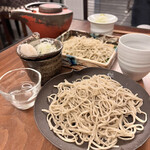
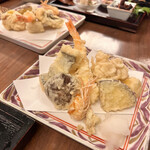
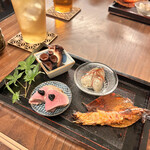
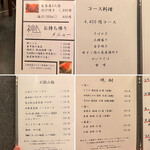
kanipan_vv
3.40
I visited during lunch break at work. I arrived after 1:00 pm and waited for about 5 minutes. It's a popular place. The staff's hospitality really made me feel at ease. I ordered the sudachi soba. The soba was delicious, but the two highlights were the small dish of natto kimchi hiyayakko, which had no unpleasant natto smell and tasted really good, so I will definitely order the natto soba next time. Also, the soba-yu (soba dipping broth) was amazing. It had a thick and smooth texture with a pleasant roughness, and it was really delicious. I want to visit again soon.
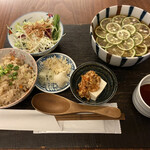
Email Login